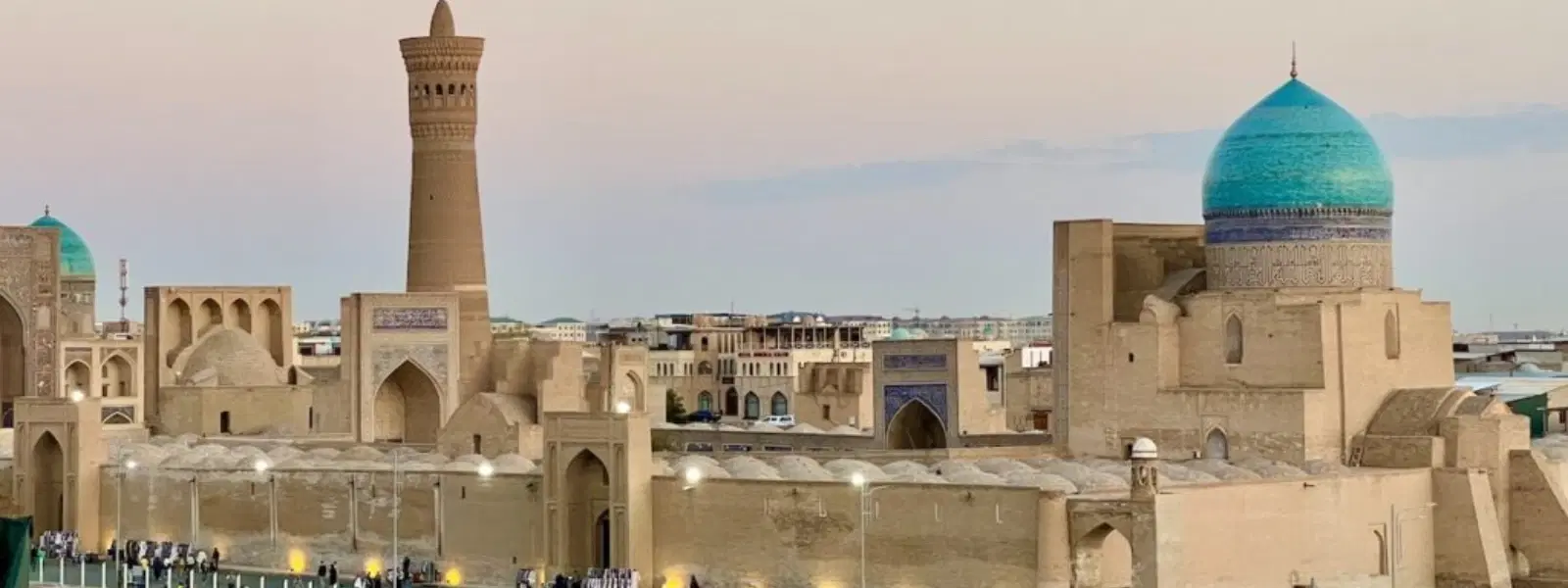
Hotels
•03 min read

The ancient Silk Road remains one of history’s most enchanting trade routes, and Uzbekistan was its heart. This storied land once bridged the cultural and economic worlds of East and West, with cities like Samarkand, Bukhara, and Khiva flourishing as vital crossroads. In this blog, you will learn about Uzbekistan’s pivotal role on these ancient trade routes, discover key attractions, and explore how the rich tapestry of its culture continues to inspire modern travelers, including Indian visitors who admire its historical and cultural ties.
The Silk Road was not a single road, but rather a sprawling network of trade routes that linked Asia, Europe, and the Middle East. It enabled merchants to exchange silk, spices, precious metals, and ideas while facilitating cultural interactions that enriched civilizations along its path. Its legacy is seen in art, religion, and science, making it one of the greatest conduits of human exchange in history. According to UNESCO, the Silk Road played a crucial role in the development of civilizations and the exchange of cultural values.
Uzbekistan was strategically positioned along this ancient route. Its cities served as bustling hubs where traders, scholars, and travelers mingled. Samarkand, Bukhara, and Khiva emerged as centers of commerce and culture. Their historical importance is not only in their facilitating trade, but also in the way they nurtured the exchange of philosophies and craftsmanship that still resonates through Central Asia today.
Samarkand has long been celebrated for its influential role in Silk Road trade. The city boasts a rich portfolio of attractions that have earned it a prestigious UNESCO World Heritage designation. Wander through the majestic Registan Square, visit the intricate Shah-i-Zinda necropolis, and admire the grandeur of the Gur-e-Amir Mausoleum. These sites capture the essence of Samarkand’s historical splendor and dynamic trade legacy.
Bukhara, another ancient gem of Uzbekistan, is renowned as a center for Islamic culture and trade. Its streets echo with stories of a bygone era when scholars, traders, and mystics gathered to share wisdom. The Po-i-Kalyan Complex, the imposing Ark of Bukhara, and the serene Sitorai Mokhi-Khosa Palace all stand as testaments to the city’s enduring charm and distinguished role in the Silk Road culture.

Khiva offers a mesmerizing experience, where time seems to have paused. Its well-preserved architecture makes it feel like a living museum. Explore the ancient confines of Itchan Kala, gaze upon the striking Kalta Minor Minaret, and step inside the historic Tash-Hovli Palace. Khiva captivates visitors with its authentic glimpse into ancient life along the Silk Road.
Caravanserais were crucial to the Silk Road's success. These roadside inns provided travelers with a safe haven to rest, exchange news, and recuperate during long journeys. Uzbekistan is home to several notable caravanserais, each inviting visitors to experience the hospitality that once sustained traders on arduous desert routes.
The vibrancy of the Silk Road was reflected in the variety of goods traded along its expanse. Silk, spices, and precious metals were exchanged, along with innovative ideas and artistic expressions. The profound cultural impact of these exchanges is evident in modern Uzbekistan, where art, science, and religious traditions continue to intertwine, echoing centuries of collaboration and shared wisdom.
Uzbekistan’s commitment to preserving its storied past is showcased by its UNESCO-listed landmarks. These sites serve as vital reminders of the region’s historical significance on the Silk Road. They not only offer a window into the rich past but also highlight the global importance of preserving our shared cultural heritage.
The legacy of the Silk Road continues to shape Uzbekistan’s identity today. Modern tourism in the country is deeply influenced by its historical sites, cultural festivals, and cherished culinary traditions that evolved from centuries of cross-cultural exchange. Whether you are a wanderer seeking spontaneous adventure or a planner looking for a carefully crafted itinerary, Uzbekistan offers experiences that resonate with the soul of ancient trade routes.

The Silk Road is more than just an ancient trade route—it’s a symbol of global connectivity and cultural exchange. Uzbekistan, with its rich heritage and vibrant cities, remains a living testament to this historical legacy.
Yes, Uzbekistan was a critical part of the Silk Road, serving as a crossroads for trade and cultural exchange between Asia, Europe, and the Middle East.
Samarkand was a key city on the Silk Road due to its strategic location and its role as a center for trade, culture, and intellectual exchange.
The Silk Road, an ancient trade network, passed through Uzbekistan, connecting major cities like Samarkand, Bukhara, and Khiva.
Yes, Muslims were among the many groups who used the Silk Road for trade and cultural exchange, contributing significantly to the spread of Islam along the route.
Uzbekistan’s rich history and vibrant culture make it a cornerstone of the Silk Road’s legacy. From the architectural wonders of Samarkand and Bukhara to the preserved heritage of Khiva, the country offers a unique glimpse into the ancient trade routes that shaped the modern world. Exploring Uzbekistan’s Silk Road attractions invites travelers to experience an enduring spirit of global exchange and cultural diversity, ensuring that the magic of the Silk Road remains alive today.